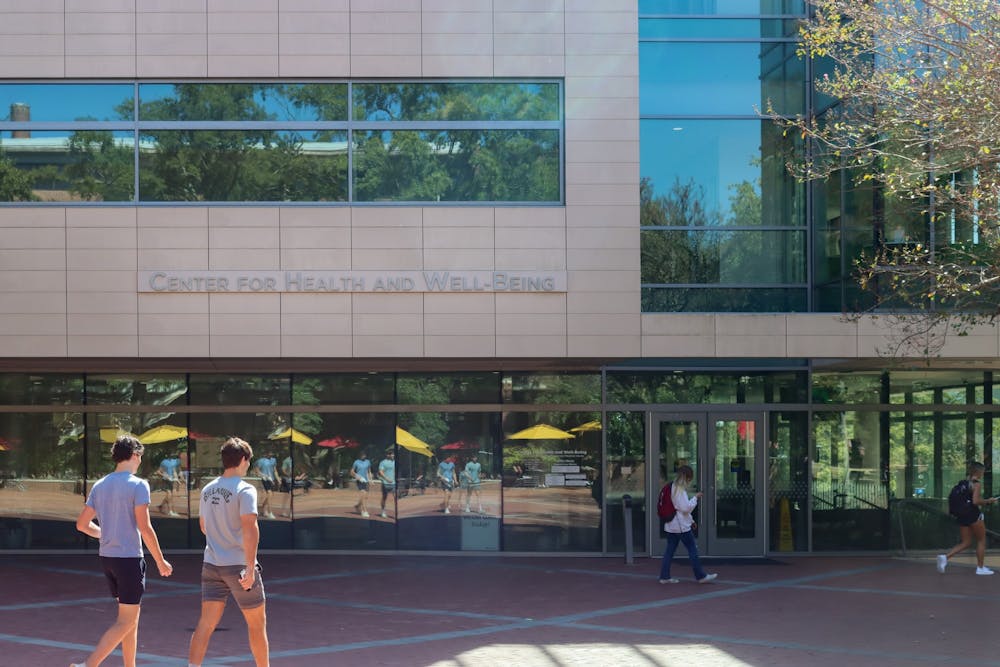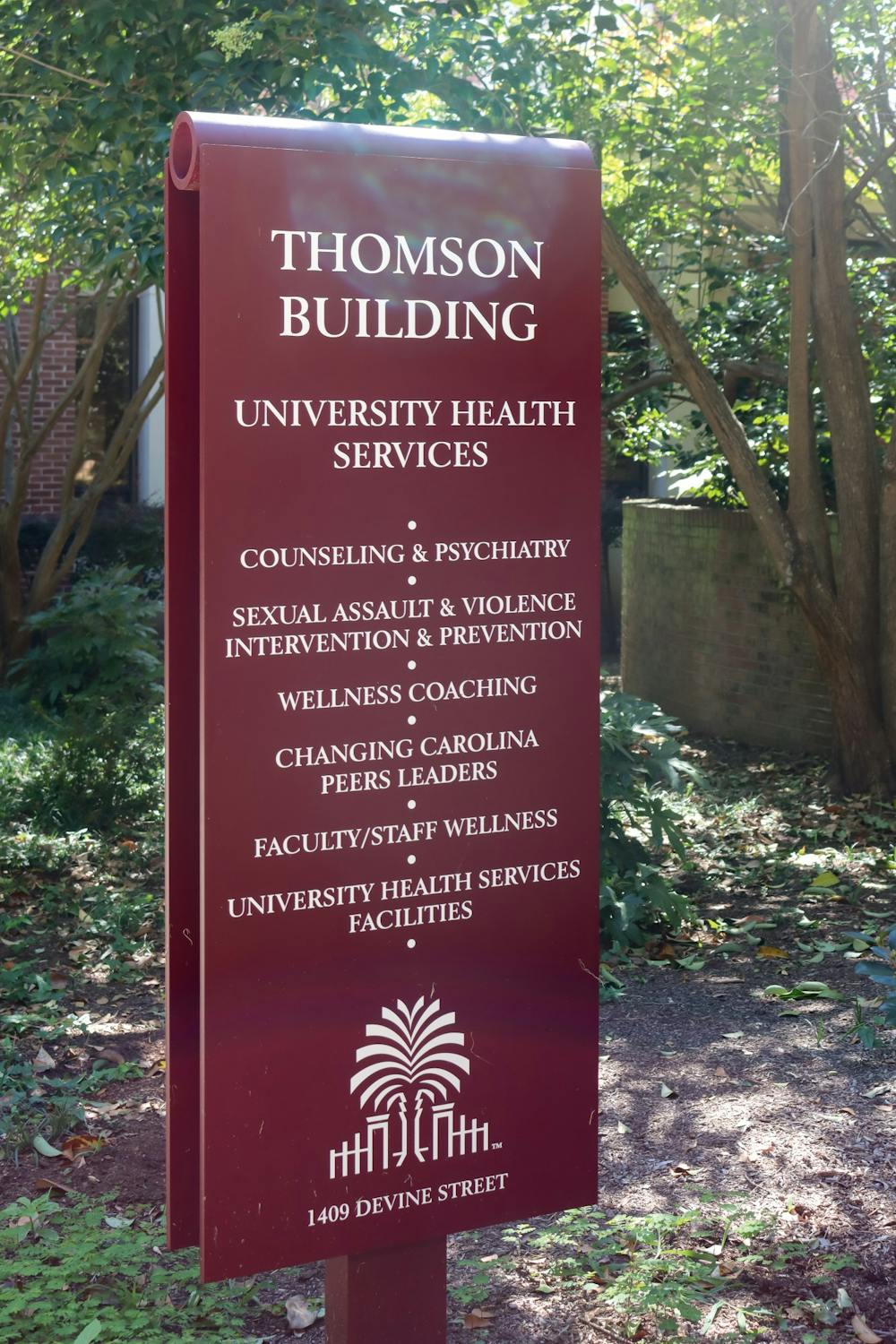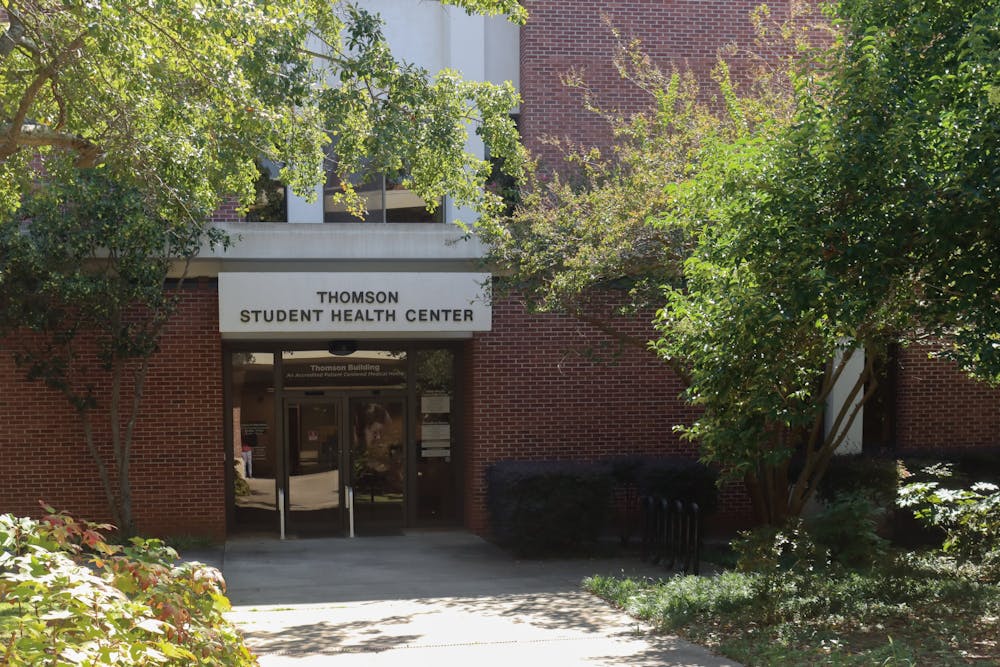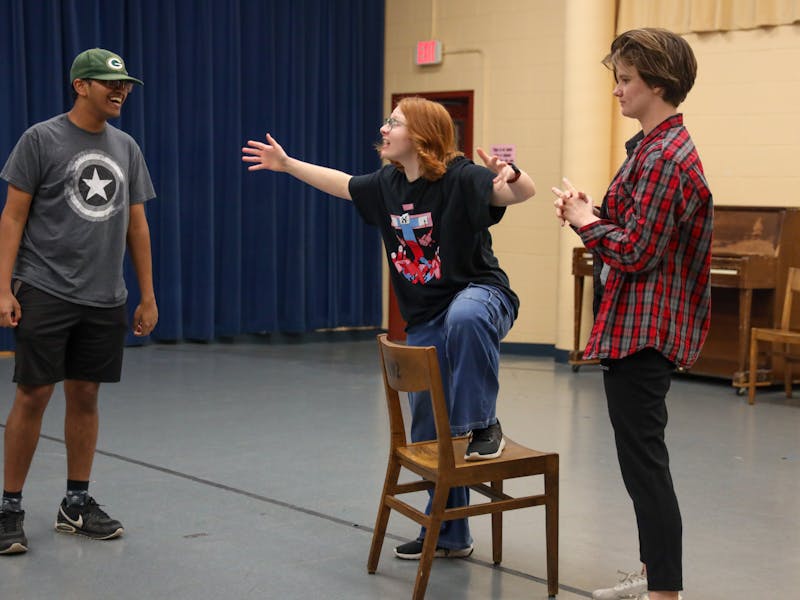Anxiety. Depression. Suicide. Therapy.
These are all words that make many children, teenagers and adults squirm in their seats. It is uncomfortable to face what is often seen as a dark conversation.
"It’s embarrassing," a student might whisper, afraid of speaking about how they feel. "It isn’t really anxiety," a parent might say, planting that detrimental seed of doubt in their child’s mind that influences years of health decisions. Even if a person tries their hardest, there is always something else to do: school, work, laundry, finances, exercise, classes, social life, etc. Mental health is usually not at the top of a person’s to-do list, and it looks like it isn’t at the top of the university’s either.
On the UofSC campus, the Thomson Center is the hub of mental health resources. This building, tucked behind the brand new Center for Health and Well-Being (CHWB), has been serving Gamecocks for 45 years in all areas of wellness, but it was recently solely designated as the space for mental health resources. All other departments were relocated to the new CHWB complex that opened about six years ago, in July 2017.While this center is fully funded and brand new, the Thomson Center is understaffed and still waiting on vital funds to allow its staff to provide students with adequate resources.
Student mental health statistics on campus over the years have changed as well. According to an article by Abe Danaher, “on South Carolina’s campus between 2019 and 2021, UofSC students diagnosed with depression increased from 20.1% to 23.1% and anxiety increased from 26.2% to 32.9%.” Whether this increase correlates with the transition period from the Thomson Center to the CHWB cannot be said. Still, various students have found difficulties in trying to take advantage of mental health resources on campus.
Sophomore Hope Fahrner has previously used the counseling services provided, but it took two weeks just to secure her initial triage appointment.
“By that point I felt like my state had changed and my attitude about whether or not I wanted to try therapy had kind of changed too,” Fahrner said. “I started working on my own coping skills, whether or not they were positive or negative, who knows?”
Another sophomore, Katelyn Fry, shares Fahrner’s frustrations about scheduling an appointment as she was not able to get in with a counselor at all. Fry had been seeing both a psychiatrist and therapist at home, who knew her medical history as well as the things she had been diagnosed with, but was turned away from counseling services at the Thomson Center.
“I went and told the person in my initial intake things that I had been working on, or things that I had been diagnosed with, and they were kind of just like ‘No I don’t think I see that’ or ‘Are you sure that that’s right?’” Fry said. At the end of this initial evaluation, the counselor offered to give Fry the names of other service providers in the area, but did not think she needed help at the time.
"...even if I wanted to see somebody, they didn’t think I needed to,” Fry said. “In that aspect, it’s not really fair to the student because I feel like the student knows more about their own situations and stuff rather than the person they are talking to.”

Due to an inability to use the counseling resources, Fry turned to an alternate option: a wellness coach provided by the CHWB. This is an available resource for those who may not be able to schedule a counseling appointment, or simply want help that is more tailored to a specific area; these include balanced eating, physical activity, stress management, sleep, tobacco treatment or resiliency, according to the Student Health Services website.
While Fahrner was able to get in to see a counselor, she also eventually turned to other resources due to a lack of satisfaction with the Thomson staff.
She explained that her expectations of the counseling were that she would have her thought processes broken down and be provided with techniques to use. For her, that was not the case.
“Once I had the appointment it really didn’t feel very productive for me, and I haven’t tried therapy before so I can’t specifically say that it was a ‘bad therapist', but I didn’t learn any tools to use or anything,” Fahrner said. “It was kind of just I was sharing my story and she was like ‘Oh, that really sucks.’”
At the end of her appointment, there was no follow-up suggested or scheduled by the counselor, so Fahrner turned to Therapy Assisted Online (TAO). While living at Preston Residential College last year, Fahrner began to create a program called “Mindful Mondays” and was looking for something to supplement that and offer to those looking for help. Before she recommended it, though, she wanted to try the program.
TAO is UofSC’s online module program that provides students with meditation audios, mindset training and other resources for mental health and well-being. This can be done completely on one’s own without any appointment needing to be made. Due to the online nature of the program, however, it may not be effective for all students.
Although Fahrner and Fry had difficulties regarding counseling at the Thomson Center, freshmen Maura Hamilton and Aurora Swain had very different experiences.
Hamilton has never had counseling before, stating that her parents “don’t believe in mental health” and therefore limiting her opportunities. When she came to college, however, she knew she wanted to use the on-campus resources. For her, it was simple: Google "UofSC Mental Health" and make an appointment online. She did this easily, without any complications or delays.
“I’m 99% sure I did it a week later because they were like ‘Oh you could do it at 6 o’clock today,’ but I just didn’t have the free time,” Hamilton said. When it comes to the sessions themselves, Hamilton has been pleasantly surprised.
“Last time I walked out of it and was like ‘Wow, I feel so much better’ as if the whole point of it isn’t supposed to make you feel better and it's just weird it works,” Hamilton said.
Swain also had no issues scheduling an appointment and enjoyed the services provided, stating that the sessions at UofSC have felt similar to her prior experiences in counseling.
“It’s been genuinely just like having a private therapist,” she said.
The contrast between the two sets of stories regarding the Thomson Center raises concern, and it almost seems as if students are reaching blindly into a pool and hoping they have a positive experience. When it comes to something as delicate and vital as mental health, having access to adequate resources should never be luck of the draw.
In terms of getting emergency care, however, a student who wishes to remain anonymous has verified that they were well taken care of.
“I had to have an emergency appointment because last year my mental health was really bad,” the student said. “After that it was actually really easy, and they kind of expedited my process in comparison to others because I was at risk.”
While they had a good experience with the Thomson Center, the student also recognizes that this isn’t the case for everyone who needs help. They propose that the center makes a change in how the intake surveys are filled out.

In order to go to your initial appointment, a student must fill out a small questionnaire. This survey does not become available, however, until after the appointment is scheduled. This student suggests that prospective patients should be able to fill out the survey as they are trying to schedule the appointment in order to evaluate how immediate their need to see a counselor is.
“I’m not saying no one doesn’t deserve it, but if people are at a higher risk for suicide or anything like that, I think that obviously they should be placed more on the priority list,” the student said.
For a lot of students on campus, the problem isn’t just not being able to get in with a counselor, it is not knowing where to look for these resources in the first place. Fry believes that sending out an email to the student body would be most beneficial.
“I don’t know exactly how they would do that, but just sending out a campus-wide email just with mental health resources and direct links to how you can sign up or how you can get in contact with those people would be very helpful,” said Fry.
Despite the variety in student experiences, most agreed on one thing: the Thomson Center has potential that is not acted upon due to mental health not being a top priority for the university.
When the CHWB was first established as a separate building in 2017, an article about the opening wrote that the Thomson center "will be renovated" but there are no further articles describing any such renovations. While the article also states that mental health is one of the university's primary concerns, the building for these resources is 45 years old, without many updates, standing beside a new, fully-funded health center.
The Thomson Center also has a considerably smaller staff than the CHWB. On the Faculty and Staff Directory for Student Health Services, only 35 out of the 155 names were for staff members under the "counseling" filter. While there is less of a variety of roles to be filled in the Thomson Center versus the Center for Health and Well-Being, the need for a large staff is just as great. In a school of almost 27,000 undergraduate students, having only 35 counselors available is not an adequate amount to ensure students have the opportunity to truly take advantage of the resources at the Thomson Center. Fahrner believes that these 35 staff members are doing what they can, but sometimes that just isn't enough.
“When talking to people who are actually a part of the mental wellness team in some way I honestly do feel like they really care. I think the hard part is just making it all happen,” she said. “I think people have a lot of ideas, but again, I feel like mental wellness types of things usually get put at the end of the to-do list.”
Swain adds that it is the lack of financials that may be withholding the Thomson Center from reaching its full potential.
“If they were better funded they could do so much more stuff, and the people there would gladly do it I think,” Swain said. This range in experiences amongst students incites a need for the Thomson Center to truly evaluate the quality of its services and their accessibility to the student body.
“I do think we have the resources,” the anonymous student said, “I just don’t think they are being executed as well as they could be.”
Mental health should always be a top priority. If you feel it falling to the bottom of your to-do list, spend a few extra minutes with yourself to evaluate and check-in.
For anyone that may be looking for help, please refer to the following resources:
- Make a counseling appointment: call 803-777-6518 or visit MyHealthSpace
- Wellness Coaching Website: https://sc.edu/about/offices_and_divisions/health_services/wellness-prevention/wellness-coaching/index.php
- C.A.L.M. Oasis Space, Center for Health and Well Being (room 215): https://sc.edu/about/offices_and_divisions/health_services/wellness-prevention/stress-management/calm-oasis-space/index.php
- Healthy Campus Initiatives Office, Thomson Building (Suite 104): 803-777-6518
- Therapy Assisted Online (TAO): https://sc.edu/about/offices_and_divisions/health_services/medical-services/counseling-and-psychiatry/online-support/index.php
- UofSC Counseling and Psychiatry: 803-777-5223
- 24-Hour National Suicide Prevention Hotline: 800-273-8255
- Crisis Text Line: Text HELLO to 741741 (FREE 24/7 and confidential)
- The Trevor Lifeline (for LGBTQ individuals): 1-866-488-7386
- UofSC Police Department: 803-777-4215
- Prisma Health Richland Hospital Mental Health: 803-434-4813
- Columbia Area Mental Health Center: 803-898-8888
- Sexual Assault and Violence Intervention & Prevention: 803-777-8248 After-hours, call UofSC Police at 803-777-8248 and ask to speak to an SAVIP advocate
- Rape Crisis Hotline (Sexual Trauma Services of the Midlands): 803-771-7273
- Domestic Violence Hotline (Sistercare): 803-765-9428



